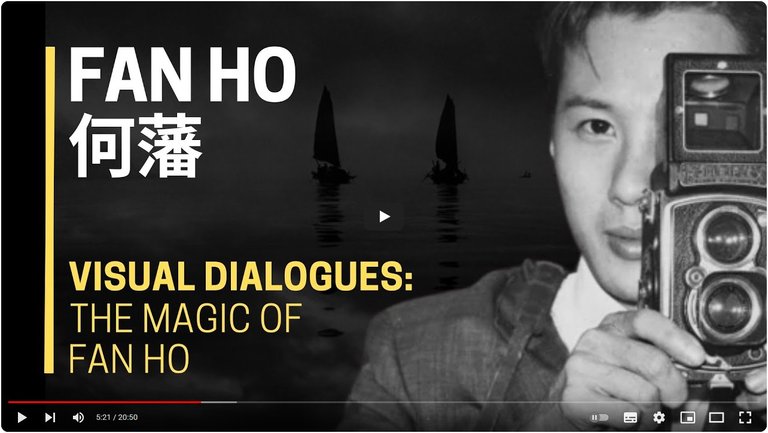Photography Masters: Fan Ho
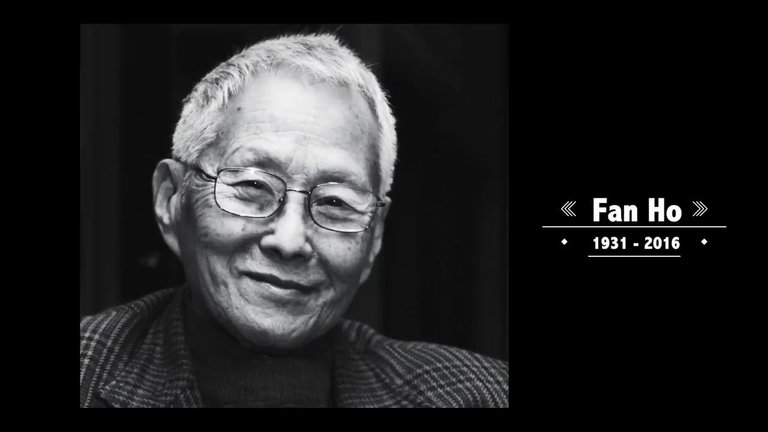
Source: Screenshot
“Truly good photographs are not taken with the camera. They come from inside you, your eyes, your brain, your heart, not some cold piece of equipment.”
– Fan Ho
Whenever the talk of great photographers starts, Henri Cartier-Bresson blocks the discussion. His shadow often prevents us from objectively seeing the artistic impression left by many other photographers. Especially those who come from a civilization strange to the West. Today I will try to right this wrong. I will introduce you to a photographer who I consider better than Cartier-Bresson.
Better than Cartier-Bresson? How is that even possible? Let me explain my position. Henri Cartier-Bresson was a perfect photo-reporter. Story teller. Life documentarist. His photographs are extraordinary – photographs. But when you see works of Chinese photographer Fan Ho, you will see extraordinary photographs with a distinct touch of – pure magic!
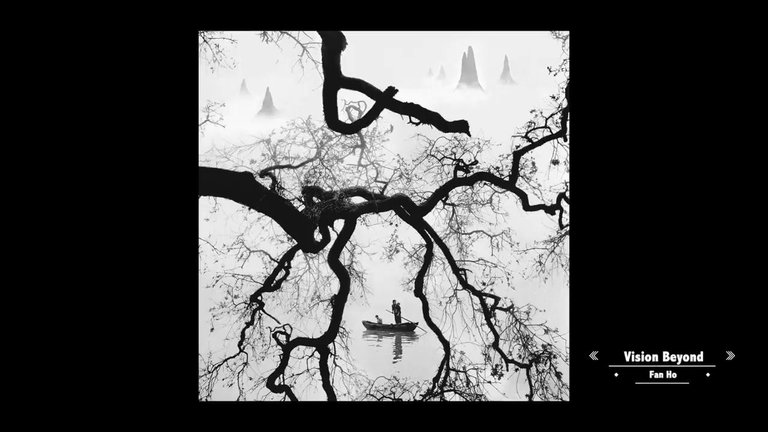
Source: Screenshot
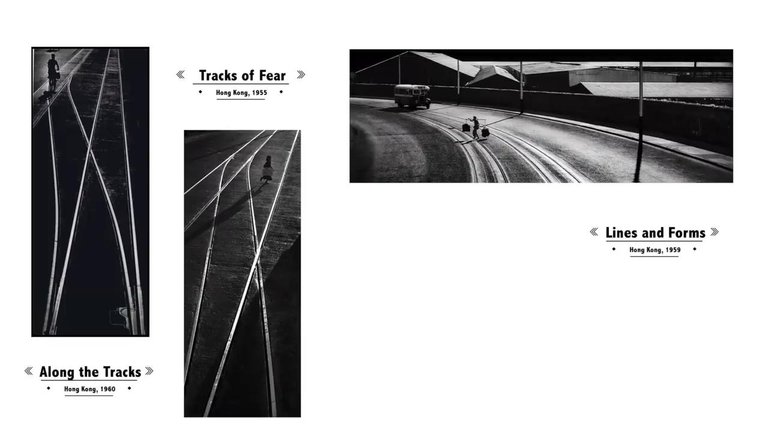
Source: Screenshot
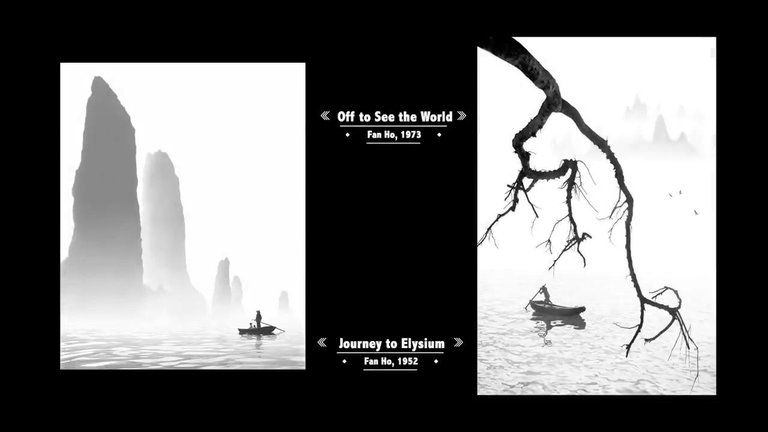
Source: Screenshot
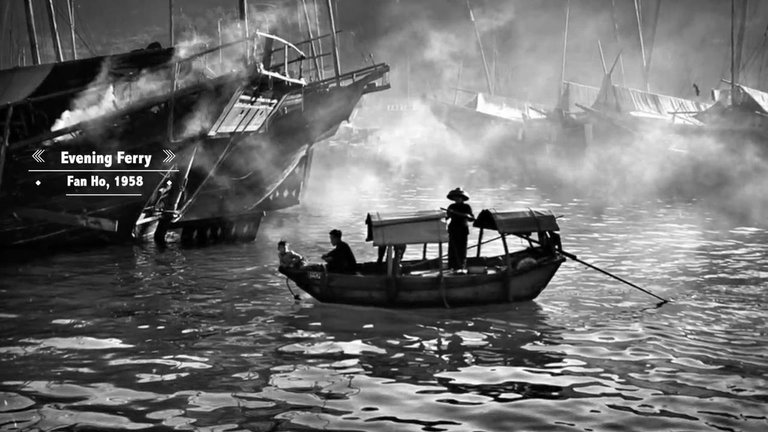
Source: Screenshot
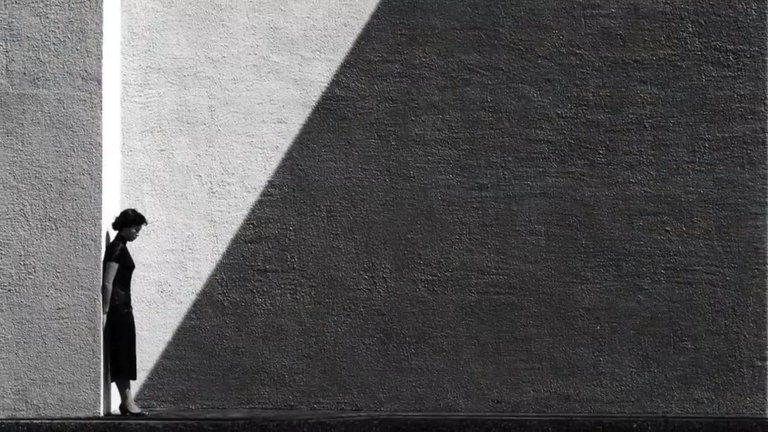
Source: Screenshot (“Approaching Shadow”, 1945 – crop)
This quality did not escape the creator of the series “Photography Masters”, Joel Ulises, who aptly titled the episode about this great artist:
VISUAL DIALOGUES: The MAGIC of FAN HO. Duration: 20:50
He truly was an unsurpassed master of light and shadow. In his video, Joel Ulises very nicely presented his life and work. I leave you here a full transcript:
* * * VISUAL DIALOGUES: The Magic of Fan Ho * * *
by Joel Ulises
INTRO
Who was Fan Ho
Fan Ho, the iconic photographer, holds an indelible place in the annals of photographic history. His remarkable black and white images, which encapsulate the very soul of mid 20th century Hong Kong have left an enduring legacy. Fan Ho’s unique Vision characterized by a profound understanding of composition, and a profound appreciation for the interplay of light and shadow elevates his work far beyond the confines of mere documentary photography. Instead it transforms each image into a work of art unto itself.
Born in Shanghai, Fan’s Journey as a photographer was marked by his early passion for capturing the beauty of everyday life. He moved to Hong Kong in 1949, a city teaming with life vibrant cultures, and captivating architecture, and this dynamic Metropolis would serve as the perfect canvas for his artistic exploration. Armed with his trusty Rolleiflex camera, Fan Ho would traverse the bustling streets and winding alleyways, uncovering moments of profound grace and poignancy amidst the chaos.
Fan Ho’s photographs characterized by their stark monochromatic palette, are a testament to his mastery of light and shadow. He had an uncanny ability to seize upon the interplay of contrast and texture drawing the viewers gaze to the subtlest nuances of his subjects. Whether it was the play of light on a weathered face, the geometric precision of a stairwell, or the intimacy of a fleeting moment between strangers, his images held a mesmerizing quality that made them more than just snapshots – they were windows into the very essence of Hong Kong’s urban life.
His Works have been celebrated worldwide, garnering numerous awards and accolades. Fan Ho’s Artistry and Technical prowess continue to inspire photographers and enthusiasts alike transcending temporal and geographical boundaries. His ability to transcend the ordinary, transforming the streets of Hong Kong into an artistic canvas of profound beauty and emotional depth, stands as a testament to the enduring power of photography to encapsulate the human experience. Fan Ho’s Legacy remains an enduring source of inspiration for artists and storytellers who seek to capture the world’s fleeting moments and emotions through the lens of a camera.
BIOGRAPHY
Life and work
Fan Ho was born in Shanghai in 1931. Fan Ho’s photographic career started in Shanghai at the early age of 14, when given his first Kodak brownie for his birthday from his father. Fan Ho moved to Hong Kong with his family at the age of 18. It was there that he began to hone his craft, exploring the city streets and alleys to capture the people and places that would come to define his style. Fan Ho was most prolific in his teens and 20s and created his biggest body of work before reaching 28. His work didn’t go by unnoticed at his time. He won close to 300 local and international Awards and titles in his day through competing in the salons. His talent was also spotted by the film industry where he started out as an actor before moving to film directing until retiring at 65.
Over the course of his career, Fan Ho published several photography books and won numerous awards for his work. Fan Ho’s photographs are characterized by their striking use of light and shadow, which creates a sense of drama and depth in each image. He often incorporated architectural elements into his compositions, using the lines and angles of buildings to frame his subjects and draw the viewer’s eye through the image. He never intended to create a historic record of the city’s buildings and monuments, rather he aimed to capture the soul of Hong Kong.
The work of Fan Ho is often compared to the iconic French photographer Henri Cartier-Bresson, who is widely considered one of the most influential photographers of all time. Both artists shared a deep appreciation for the decisive moment, that fleeting instant when all the elements of a scene come together to create a perfect composition. Like Cartier-Bresson, Fan Ho had a remarkable ability to capture life as it happened, often waiting patiently for the right moment to snap his shutter. His photographs are characterized by their spontaneity and energy as well as their careful attention to detail and composition. However, while Cartier-Bresson is known for his candid street photography, Fan Ho’s work often has a more deliberate almost cinematic quality. He was a master of using light and shadow to create mood and atmosphere, and his images often have a sense of drama and story telling that sets them apart from the work of his contemporaries.
Despite these differences, both Fan Ho and Cartier-Bresson shared a deep respect for The Art of Photography and their work continues to inspire and influence generations of photographers to this day. From bustling street scenes to quiet moments of contemplation, Fan Ho’s photographs capture the essence of a bygone era with an elegance and grace that is truly timeless. Today, Fan Ho’s work can be found in Galleries and museums around the world where it continues to inspire and captivate viewers with its beauty and artistry.
Fan Ho was a fellow of the photographic Society in the Royal Society of Arts in England and an honorary member of the photographic societies of Singapore, Argentina, Brazil, Germany, France, Italy and Belgium. His work is held in temporary and permanent collections across the globe, including that of the San Francisco Museum of Modern Art and bibliotech National to France. Nevertheless, until later in his life and indeed in the Years following his death in 2016 he remained relatively unknown in the west outside of the most discerning photographic circles.
However thanks in large part to his trust and their sole representative Hong Kong’s Blue Lotus Gallery, who has facilitated the showcasing of his work to a wider audience, his extraordinary talent is beginning to gain the recognition it so thoroughly deserves.
Black and white
Selected works
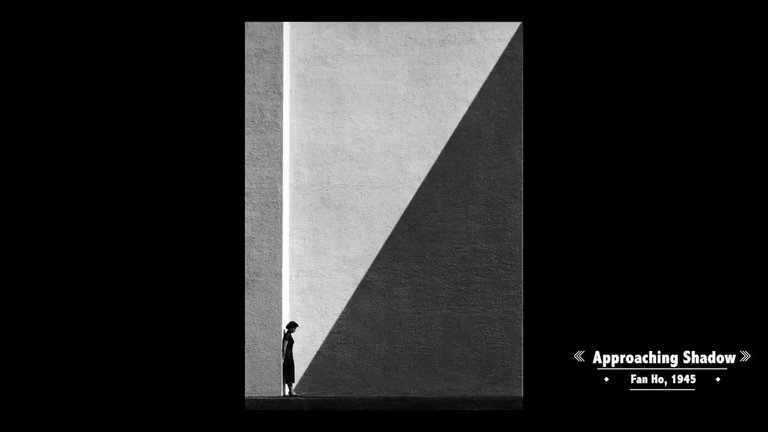
Source: Screenshot
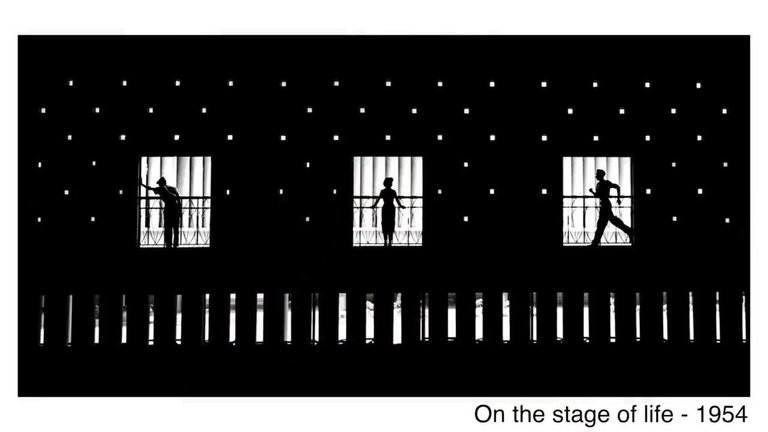
Source: Screenshot
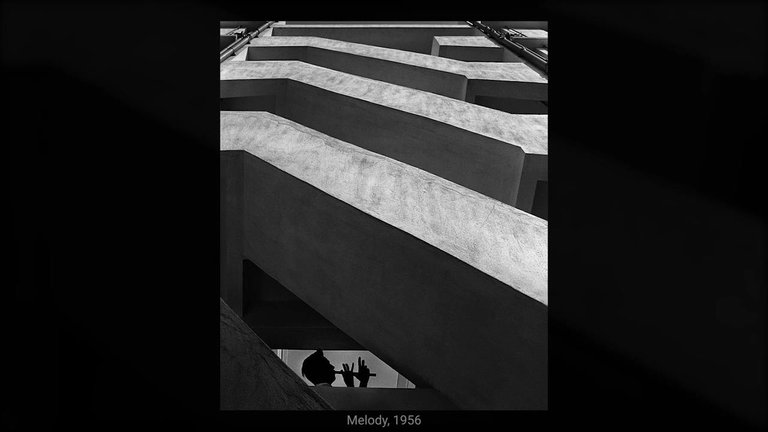
Source: Screenshot
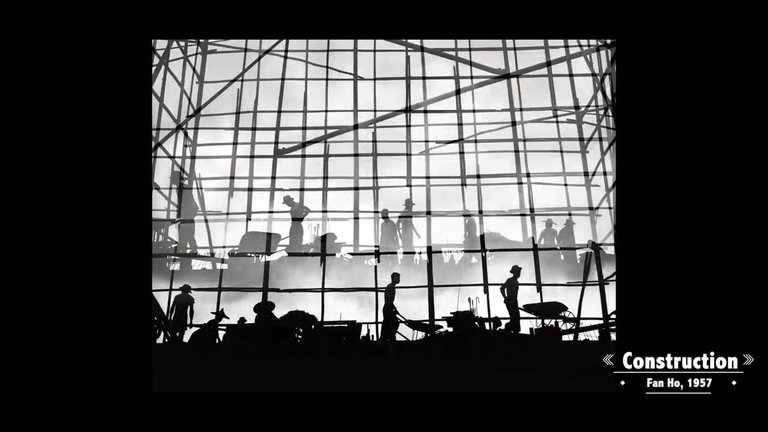
Source: Screenshot

Source: Screenshot
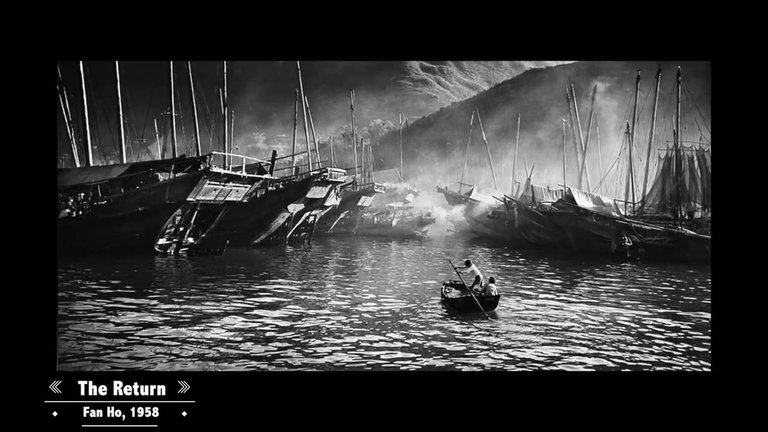
Source: Screenshot
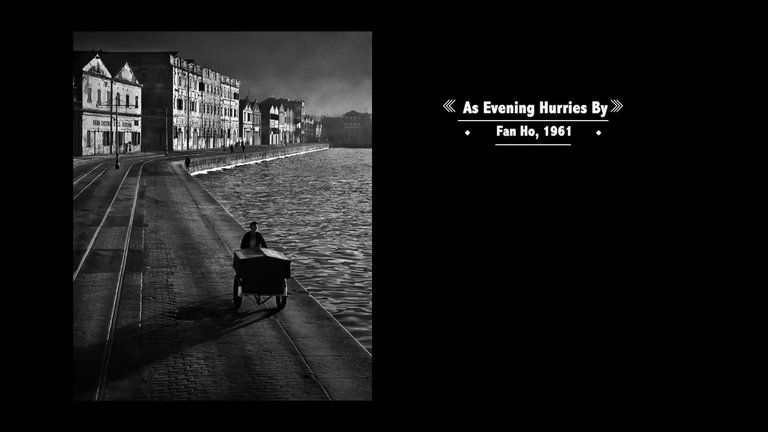
Source: Screenshot
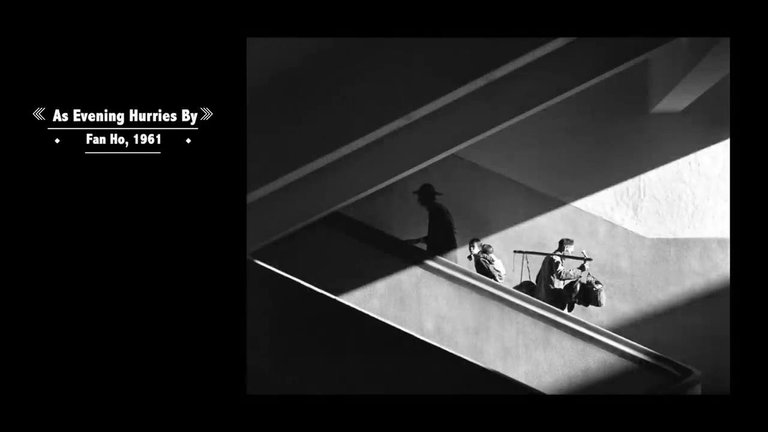
Source: Screenshot
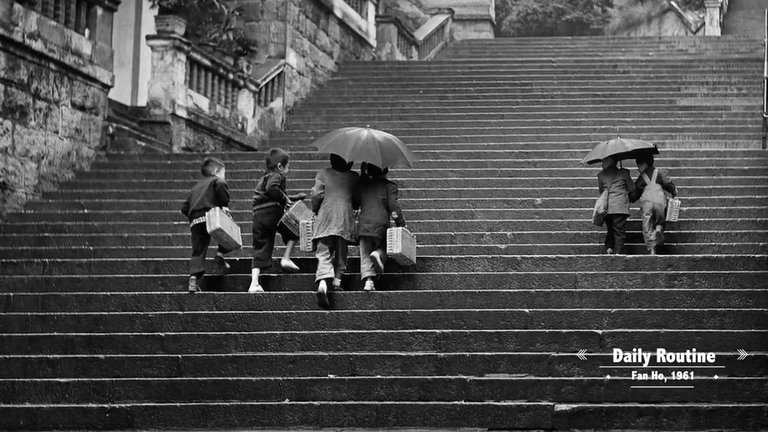
Source: Screenshot

Source: Screenshot
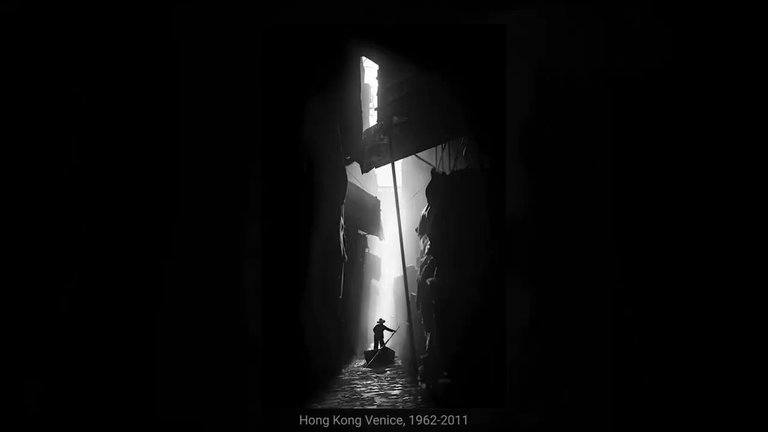
Source: Screenshot
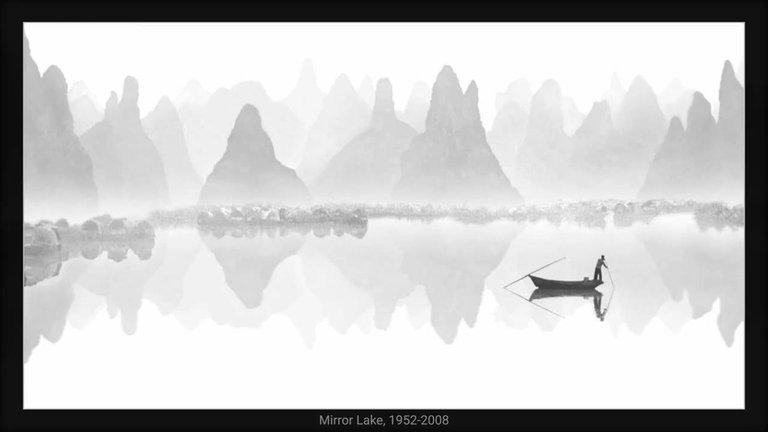
Source: Screenshot
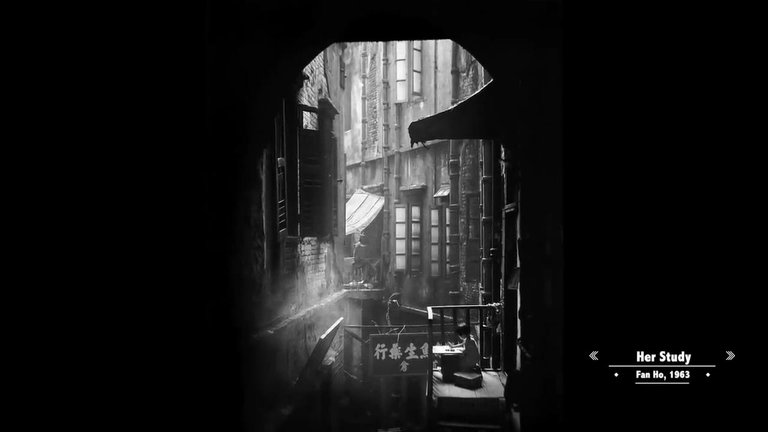
Source: Screenshot

Source: Screenshot
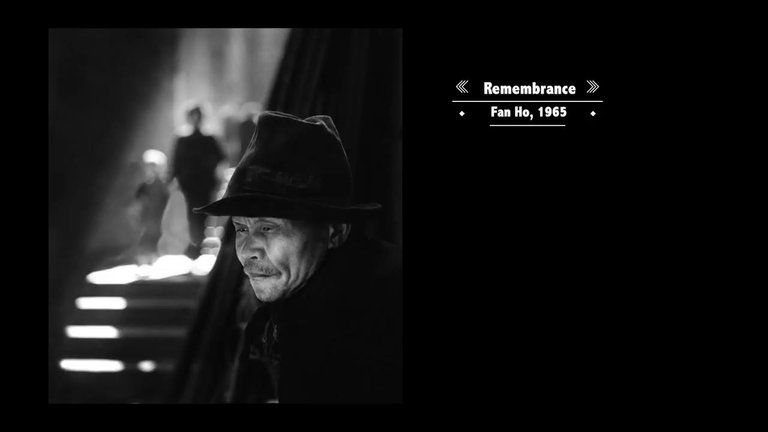
Source: Screenshot

Source: Screenshot
FINAL WORDS
Reflecting on his life
In the vast gallery of photographic history there are names that shine like shooting stars, leaving behind a luminous trail that endures for generations. Among these luminaries the moniker Henri Cartier-Bresson of the East fittingly belongs to a man whose life and work transcend mere technique, delving into the very essence of The Human Condition – Fan Ho.
At the tender age of 14, Fan Ho held in his hands for the first time a humble Kodak Brownie. In that moment, Destiny gifted him a one-way ticket to a world of light, shadows and emotions captured in black and white. Little did he know a legend was born. That initial shot which awarded him first place in a local contest foreshadowed a career filled with unimaginable accomplishments.
Fan Ho dedicated his life to documenting the everyday existence of Hong Kong’s residence during the 1950s and 1960s. His camera, a Rolleiflex, became his silent confidant and witness to history. Through his lens he wove a tale of the city, a symphony of lights and shadows that spoke of the frenetic bustle of Hong Kong and the solitude that accompanied it. His Mastery of light and geometry was undeniable. He manipulated shadows with finesse much like a painter carefully strokes his canvas. Every element in his photographs, from the subject to the environment, from the light to the composition, was arranged with surgical precision.
Yet what truly set Fan Ho apart was his ability to evoke emotions through his images. Each photograph was a visual poem that spoke of beauty, dignity, and contemplation. In Fan Ho’s own words: “I like to concentrate and simplify the world into black and white. It suited my nature better. I could express my emotions more freely they were more under my control, and the results were surreal and semi-abstract. I like this distance, neither too close nor too far.”
In his photographs we find not only technical prowess but also the emotional depth that only a true artist can achieve. Every image immortalized by Fan Ho is a testimony to the melancholy and drama of old Hong Kong. He captured the most vulnerable part of the city in its purest form highlighting the chaotic atmosphere of a city in transition. It was no easy task especially in a densely populated Metropolis like Hong Kong but Fan Ho’s patience was unshakable. He waited often for hours for that decisive moment when the the unexpected became tangible framed by the Mastery of geometry in texture.
Fan Ho’s masterpieces were born from his deep love and empathy for Hong Kong and its people during challenging times. Each photograph tells a story of determination and hardship the roots of what is today a prosperous city. He walked through empty alleyways, wet markets and streets that melted into the darkness of the evening capturing street vendors and street children. His goal was not only to document but also to share his love and respect for the working class with the world.
Fan Ho’s life and work are a reminder of Art’s capacity to transcend the barriers of time and culture. His photographs are not only a window into Hong Kong’s past but also a mirror in which we can contemplate our own existence. In our pursuit of passions and the expression of our emotions we find an invaluable lesson in Fan Ho: everyday life photography can be a faithful reflection of our humanity and a way to connect with the world around us. Fan Ho teaches us that, as he did through his lens, we must find the balance between distance and proximity in our own lives. We need to simplify and focus on the essentials, much like black and white in his photographs, to express our emotions authentically and powerfully.
He also reminds us that amidst complexity and Chaos Beauty and meaning can be found if we have the patience to wait for the decisive moment in our lives. Ultimately, Fan Ho leaves us with a valuable Legacy, the ability to look beyond the obvious, find poetry in the everyday. and capture the essence of life in every image we take. His photographs are more than snapshots they are silent witnesses to the profound connection between human beings and their surroundings. Let’s learn from him to see the world with the eyes of an artist and to express our emotions with the intensity and authenticity that only Everyday Life photography can achieve.
* * *
See also an excellent presentation by Martin, from the About Photography YouTube channel:
Duration: 8:54
It’s easy to become a fan of Fan Ho, isn’t it…
* * *
Related posts:
SLR Lens Mount Identification Guide
A Revolution! At last! (Sony a9 III)
Nikon Zf – The one I could fall in love with!
DPreview going to the void… [eng/срп] DPreview иде у ништавило…
Viltrox Homerun: Pro AF 75mm f1.2 – Dream Portrait Lens! [eng/срп] Вилтрокс у центар: Про АФ 75mm f1,2 – портретни објектив из снова!
Lomo DigitaLIZA Lab [eng/срп] Ломо ДигитаЛИЗА Лаб
Swan Portrait (With a very old lens) [eng/срп] Портрет лабудова (веома старим објективом)
Canon EOS R6 Mark II
Nikon Z30 – Nothing to see here…
Leica M11 – A New Oldie!
Mirrorless 2021
Tamron 18-300mm F3.5-6.3 Di III-A VC VXD – A Perfect Travel lens?
A Nostalgic Magic – Nikon goes Fuji!
New Goodies from Fujifilm!
Remini – Magic of AI
A Monster Killed Pentax!
WednesdayWalk – Street Life (With old lenses) [eng/срп] Шетња средом – Живот улице (старим објективима)
News from a Photo Circus: Nikon Mark II Clowns and Canon Flash Jokers!
EXCLUSIVE LOOK INTO THE FUTURE – Fujifilm X-S10!
Youth Football Training [eng/срп] Омладински фудбалски тренинг
Sony a7C – The Smallest FF cam… well… with EVF
Pentax Principles… in Practice
Nikon Z5 & Clueless Bunch of Camera Designers
Tokina SZX 400mm f8 Reflex MF – Make your mirrorless camera have mirror again!
Principles of Pentax
Canon EOS R5 & R6 – A True Revolution?
Olympus Imaging – The First Victim of Coronavirus
Tutorial: Eterna Bleach Bypass FujiFilm Simulation
Why Aren’t You Winning Photography Contests?
NEW: FujiFilm X-T4 — Closest to perfection!
NEW: Olympus OM-D E-M1 Mark III — Repackaging for Travel?
Fujifilm X100v — A Beauty Enhanced
Fujifilm X-T200 — The Shape of Things to Come
Lens test: Portrait Face-off — Nikkor vs. Canon
Lens test: 35mm Oldies — Nikkor vs. Zeiss
Nikon Z50
Fujifilm X-Pro3 — A Major Design Flop!
Yongnuo YN450 Android Mirrorless Camera… With SIM!
ZEISS ZX1 — Android Full Frame!
The Last of the Mohicans — FujiFilm FinePix XP140
Canon EOS RP — Released!
Leica M10-P ASC 100 Edition
Canon EOS RP
Full Frame Fuji? Don’t Count it Out!
Canon Speedlite 470EX-AI flash
Leica D-Lux 7
Insta360 ONE X — Ultimate Selfie Camera?
Leica Q-P — P for Perverseverance?
Pinhole Photographing — Like a Boss!
Another Blast From the Past — Escura Instant 60s
PHOTO&VIDEO REVOLUTION: New Sensor Technology!
Leica-M10-D — Digital Body. Analogue Soul. Terrible Design
Nano — Offspring of Tiny
Fujifilm X-T3 — Making it Right
Panasonic S1R and S1 Full Frame cameras
Ricoh GR III
Canon EOS R — R For Ridiculous?
Canon EOS R — Specification Leaked
Nikon Z6 & Z7 — Official
Nikon Z6 & Z7 Mirrorles
Crazy Lens — Laowa 24mm f14 Macro Probe
Water Drop Lens & Camera!
Canon EOS M6



Access Hive through Ecency
Приступите Хајву кроз Ecency

Access Hive through Ecency
Приступите Хајву кроз Ecency

Access Hive through On Board
Приступите Хајву кроз On Board

Access Hive through On Board
Приступите Хајву кроз On Board

Bastyon.com

Bastyon.com

Google detox starts here!

Google detox starts here!

Universal Basic Income

Universal Basic Income

Check out ABRA and easily invest in 28 cryptocurrencies or BIT10, an index of the top cryptos. Use this link to sign up and get $25 in free bitcoin after your first Bank/Amex deposit, or 1.5% cash back when you exchange cryptos
 1GZQG69sEKiMXKgGw9TcGcUCBoC4sC1ZYp
1GZQG69sEKiMXKgGw9TcGcUCBoC4sC1ZYp
